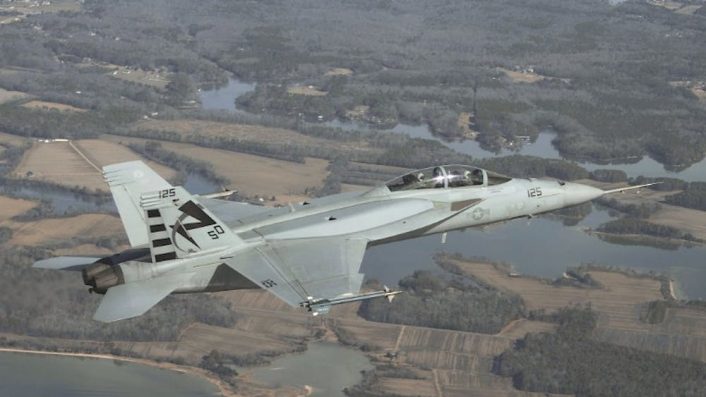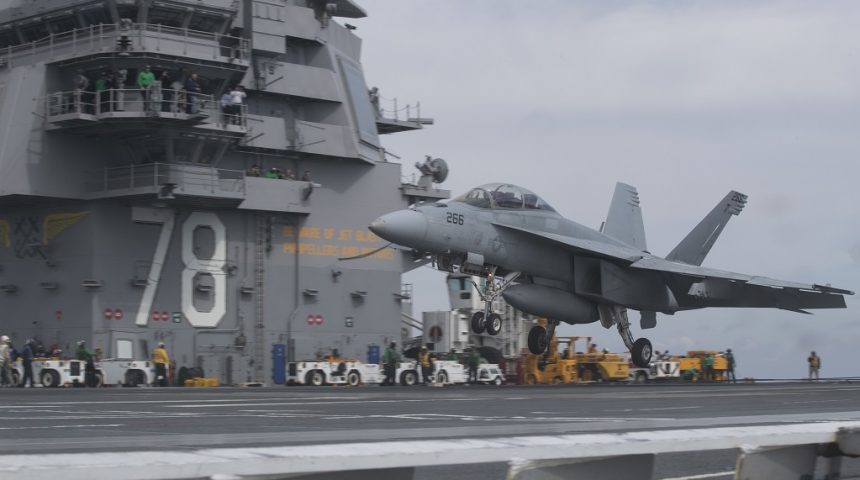The aircraft is the last of 322 single-seat F/A-18Es and 286 two-seater F/A-18Fs.
On April 17, 2020, the U.S. Navy took delivery of its final Boeing F/A-18E Block II Super Hornet. The aircraft, with construction number E322, is the last of 322 single-seat F/A-18E and 286 two-seat F/A-18F jets delivered since 2005 and will be assigned to the “Blue Blasters” of Strike Fighter Squadron (VFA) 34, the last active duty squadron to fly with the legacy F/A-18C which is now converting to the Super Hornet, based in Naval Air Station Oceana, Virginia.
The F/A-18E and F/A-18F currently form the backbone of the Carrier Air Wings, being able to perform all air-to-air and air-to-ground missions profiles, including Suppression/Destruction of Enemy Air Defenses (SEAD/DEAD) with the specialized EA-18G Growler, developed from the F/A-18F. The Super Hornet was a game changer when it entered service, as stated by Cmdr. Tyler Tennille of Defense Contract Management Agency (DCMA) in the official NAVAIR news release, with better performance and 50% more range than the Hornet.
The upgraded avionics built with an open mission systems architecture paved the way for new updates, beginning from Block II which brought the APG-79 AESA (Active Electronically Scanned Array) radar, the first radar of this kind to enter operational service, ASQ-228 ATFLIR (Advanced Targeting Forward-Looking Infrared) targeting pod, Joint Helmet-Mounted Cueing System (JHMCS) and later the ALQ-214 Integrated Defensive Electronic Countermeasures (IDECM) with the ALE-55 towed decoys.

“Delivery of this last production Block II Super Hornet is hardly the end of an era, but rather a stepping stone along the path to continuously evolving our platforms to meet the Navy’s ever-evolving needs,” said Capt. Jason Denney, Program Manager of the F/A-18 and EA-18 Program Office (PMA-265). The new Block III configuration will be a game changer on its own, with a new increased airframe life to 10000 hours, an advanced network infrastructure that incorporates the Distributed Targeting Processor Network (DTP-N) and the Tactical Targeting Network Technology (TTNT) coupled with and Advanced Cockpit System centered around the 10×19 inch large-area touchscreen display, the AN/ASG-34 IRST (Infrared Search-and-Track) and Conformal Fuel Tanks (CFT) with an additional 3500 lb fuel capacity.
“Block III delivery is just steps behind and the production lines won’t miss a beat, with the first two U.S. Navy Block III test jets delivering in the next two months, followed by delivery of 24 E/F aircraft over the next year for our international customer, Kuwait,” Denney said. As a matter of fact, Jane’s Defence reported that the first two Block III test jets are scheduled to be delivered by the end of May, according to a Boeing’s representative, and will undergo testing at both NAS Patuxent River and Naval Air Weapons Station (NAWS) China Lake
The U.S. Navy awarded Boeing the first multi-year contract for the Block III Super Hornets in March 2019 to procure 72 Block III aircraft between fiscal years 2019 and 202, with the first operational jets delivered later this year.









